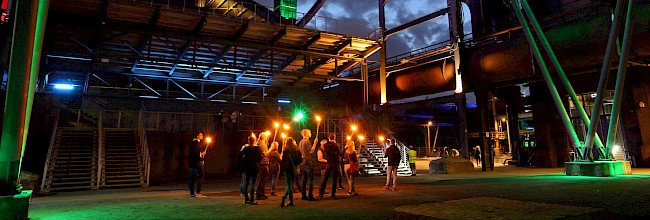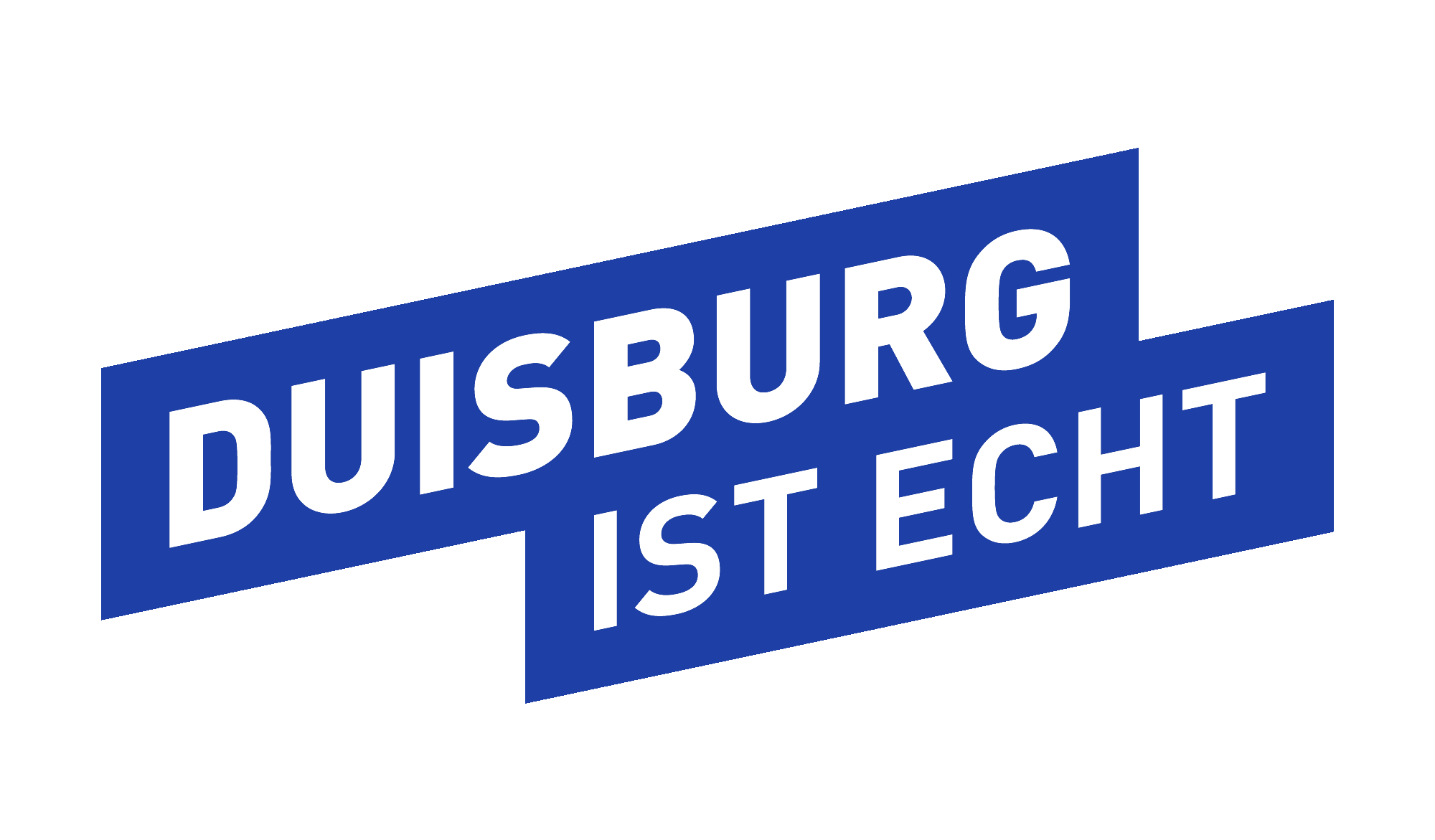Casting Houses
In the once red hot casting houses 1, 2 and 5, the molten pig iron from the blast furnaces emerged into the outside world for further processing.
Today no molten pig iron flows any more across the fire proof floor. Fire and passion are now only generated by the people who use the various buildings for a rich variety of events and cultural projects. Concerts or theatre performances are as much part of the programme as climbers craving adventure and visitors eager for knowledge.
Duisburg’s Summer Cinema attracts both young and old to Casting House 1, which is protected by a special foil cushion roof. “Expedition Steel”, the high ropes course, begins in Casting House 2 and Casting House 5 next to Blast Furnace 5, left in its original state, is a stop for many of the guided tours around the park, because casthouse 5 shows the workplace of an ironworker and is open for free every day.
History
When the works were operational, the Landscape Park’s three casting houses were central places in the production of pig iron.
The casting houses were tapped roughly every two hours. The pig iron would flow directly out of the base of the blast furnace into a bed of moulding sand covering the fire proof floor and was there hardened into iron ingots. Until 1953 the tap hole was opened by hand until the advent of the drill hammer and tap hole drill, which at least made the work in unimaginable heat a little easier. The ingots were cooled, stacked and then transported to the casthouse or steel works for further processing. The screening on the walls of the casting houses served to provide better aeration and temperature control.
Casting House 1 has been used for open air events since its redevelopment in 1996. The seating specially erected for this purpose provides places for more than 1,000 visitors who, in the case of rain, are protected by a mobile and transparent foil cushion roof. An impressive high climbing course is now to be found in Casting House 2. Casting House 5 together with the whole of Blast Furnace 5 has been left in its original condition and is today used as a stop on the park’s own guided tours. Hiere visitors can get into touch with the workplace of an ironworker.













